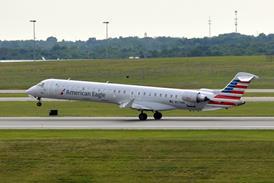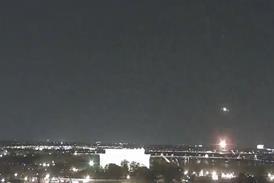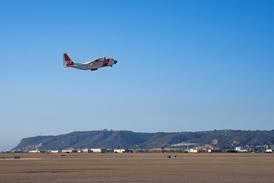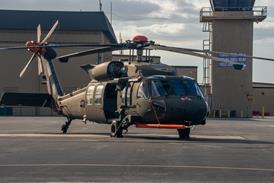An already bleak outlook for US-based business jet manufacturers has worsened in recent days with a second wave of political attacks and layoffs in as many months.
In politics, Representative Barney Frank has proposed forcing bank executives to disown travel by private aircraft, such as business jets, if they are to qualify to receive a second round of bailout money. Similar restrictions were tied to last month's federal bailout for auto companies.
The new provision, revealed The Hill newspaper yesterday, quickly prompted a storm of protest from a business jet community that was also targeted in December by the federal bailout of auto companies.
Franks’ requirement would cause "irreparable damage to the American aircraft industry, an essential manufacturing sector which still has a positive trade balance," Kansas Gov Kathleen Sebelius wrote Monday to Congress.
Sebelius’s state appears especially vulnerable to the sudden reversal of fortunes for the once-mighty business jet industry. In December, Wichita-based Hawker Beechcraft and Textron subsidiary Cessna Aircraft announced layoffs of 500 and 665 workers, respectively.
Cessna announced a second wave of layoffs on Monday, striking another 2,200 employees from the payroll as the company anticipates slower production. The combined losses represent about 20% of Cessna’s total workforce.
"This is it for now," a Cessna spokesman said. "This is what we hope will carry us through the year."
Cessna’s revised production forecast will be announced during Textron’s annual earnings presentation, scheduled for 29 January.
Neither the layoffs nor the production slowdown will change the schedule for developing Cessna’s new products – the Citation Columbus large cabin jet and the Citation Jet (CJ) 4 light jet, the spokesman said.
The US industry also faces other severe pressures from government regulators. Since 6 January, the Transportation Security Agency has launched a series of five public hearings on proposed new security rules. The TSA has proposed lowering the weight minimum of private aircraft that require security screening from 100,309lb to 12,500lb – or anything larger than a CJ1.
Industry officials and private aircraft owners are concerned the rules would impose bureaucratic reporting requirements on an industry that trades on its reputation for privacy and flexibility.
The General Aviation Manufacturers Association (GAMA) is in the process of preparing an alternative security policy for TSA’s consideration. Most importantly, GAMA wants to raise the minimum weight limit significantly higher than 12,500lb.
"There are a number of different things we do already to enhance security," said Jens Hannig, GAMA’s VP of operations. "We should embrace what the industry is already doing instead of just creating a bureaucratic structure."
Flight's new interactive business jet guide
Source: FlightGlobal.com























